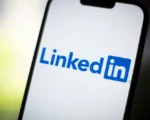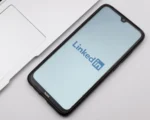LinkedIn, long seen as a professional networking space, is facing criticism from users who report receiving unsolicited flirtatious messages. According to Blair Huddy, CEO of Hudson Davis Communications, these messages have become more frequent, with some people using LinkedIn to initiate personal connections rather than professional ones. Huddy shared that she has been on the receiving end of multiple uncomfortable messages, with one user even pressuring her to “stop playing hard to get.” In response, Huddy often screenshots these messages and tags the sender, hoping to discourage unprofessional behavior on the platform.
LinkedIn consultant Shriya Boppana shared a similar experience. After updating her profile with accomplishments in media and beauty pageants, Boppana found herself receiving messages commenting on her appearance. Although Boppana and Huddy continue to use LinkedIn, the messages have highlighted a growing trend on the platform, leading some users to consider stepping back.
A LinkedIn spokesperson affirmed the company’s commitment to maintaining a “professional community,” where respectful conversations are encouraged. However, inappropriate behavior violates LinkedIn’s policies, and users are encouraged to report such incidents. Despite these measures, a 2022 survey by Passport Photo Online revealed that 91% of female LinkedIn users in the U.S. had received unsolicited romantic messages, with 74% of them reducing their platform engagement as a result. A separate study by DatingNews.com found that over half of young professionals have used LinkedIn and similar sites for dating.
Bernie Hogan, an expert from the Oxford Internet Institute, argues that LinkedIn’s design may unintentionally facilitate dating behaviors. While LinkedIn presents itself as a professional site, Hogan notes that it lacks the same oversight as traditional workplaces, leaving users to police unprofessional messages on their own. Hogan advocates for LinkedIn to explore AI tools to preemptively detect and discourage inappropriate messages, similar to the safety measures on dating apps.
Relationship expert Courtney Boyer pointed out that some users may see LinkedIn as a refreshing alternative to dating apps like Tinder and Bumble, which often leave users feeling exhausted. LinkedIn’s ability to display career backgrounds and achievements offers a level of “filtering” that appeals to those interested in partners with specific professional attributes, Boyer explained.
Despite these evolving dynamics, LinkedIn’s guidelines clearly discourage romantic interactions on the platform, specifying that it should not be used to pursue dates or comment on users’ attractiveness. However, Hogan believes that LinkedIn’s nature—presenting oneself professionally to make new connections—can give the impression of being “adjacent to dating.”
Not all users view LinkedIn’s use for occasional dating overtures negatively. Sasha Dutta, CEO of Fierce Events, shared that while she sometimes received respectful flirtations, she understood the appeal of LinkedIn as an alternative to dating apps, particularly within communities that prioritize career compatibility. Dutta, who is married, added that LinkedIn simplifies many initial dating questions by presenting profiles with clear information on career trajectories and education.
With work activities increasingly shifting online, Huddy, who met her husband in a workplace, points out that some online behaviors mirror real-world interactions. “It’s not necessarily wrong to approach someone on LinkedIn,” Huddy said, stressing the importance of respectful conduct and allowing for disengagement if one party isn’t interested.


















